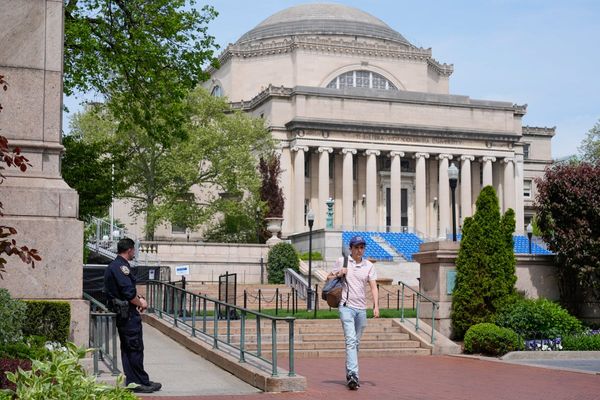
Richard Alston has been choreographing for nearly half a century, and as the rest of the dance world has opened itself up to dramaturgs and digital technology, he’s remained faithful to the idea that choreography need only be about music and steps. Often he’s appeared marginalised, out of touch with the times.
Yet in his latest work, Chacony, he proves that a combination of pure movement and music can be no less emotionally charged than the most highly produced dance-theatre.
There’s a crucial backstory to Chacony. In July 1945, Benjamin Britten was touring Germany, performing a series of music recitals for survivors of the concentration camps. He’d been a committed pacifist and what he witnessed during that tour was so traumatising he was unable to talk about it for years afterwards. His music, however, spoke for him. The String Quartet No 2, written shortly afterwards, was partly composed as a homage to Henry Purcell. Yet it was also a work into whose formal structure Britten was able to channel some of the terror and incomprehension of his recent experiences.

Alston’s Chacony is a complex and beautiful response to this moment in Britten’s personal history. Its opening section is set to a Purcell chacony, which Britten arranged in 1948; and it pays its own form of homage to Purcell’s baroque style in the elegantly configured patterns woven by its 10, burgundy-robed dancers, and in their sophisticated etiquette of courtly gestures and reverences.
This spare and graceful vignette is only a prelude to the main body of the choreography, though, which is set to the final movement of the Britten quartet, and which modulates the inspiration of Purcell through a darker, more precarious, worldview. It opens with a lone male dancer who seems fearful of the empty space around him, his movements hesitant, wavering through his body. When others join him, dressed in washed-out shades of grey, they share his uncertainty. Gestures from the opening section (a hand touching a shoulder, or braced behind the back) now appear defensive, as if the dancers are warding off danger. When a man partners a woman he offers no attempt at gallantry but burrows into her body, seeking comfort or oblivion.
It’s through contrasting registers like these, rather than literal imagery, that Alston tells his story. At the end, as Britten’s music resolves into a sequence of major chords, the dancers walk towards us in a striking v-shaped pattern. It’s a pattern that was prefigured in the opening section, but this time the dancers are clutching hands. And while they’re tightly united as a group, the final image has them twisting suddenly around to face the back. It’s a moment of mysterious, affecting ambivalence, acknowledging the hopeful power of community, but accepting that it can never exorcise the darkness of the past.
Alston has said that he’s “absolutely in love” with Britten and Chacony is one of several very fine works that he’s made to the composer’s music. Yet his tastes are eclectic and Gypsy Mixture, first created in 2004, could not come with a more raucously different score. It’s set to the album Electric Gypsyland, a collection of Balkan folk music remixed with an exuberantly global fusion of influences and instruments – electric guitar, tabla, and brass, plus an overlay of barking dogs and crying children.

After a disappointingly staid opening, Alston’s choreography succumbs joyfully to the music’s intoxication, the movement’s orderly lines breaking out in snake-hipped shimmies, flickering syncopations and whirling jumps.
The dancers are on excellent form – especially Liam Riddick, Ihsaan de Banya and Nicholas Bodych, . However, I wish Alston would allow his women as many exhibitionist opportunities as his men – aside from the gleaming, irrepressible Nancy Nerantzi, there’s something slightly muted, even polite in the choreography they get to dance.
Martin Lawrance, a former company dancer and now associate choreographer, makes work that is no less music-driven than Alston’s. But he responds to his scores in more combative ways, often hearing them in terms of conflict and clash. In Tangent, he’s pitted himself against Astor Piazzola’s Four Seasons of Buenos Aires, a piano arrangement of thunderous power and electricity, played live by Jason Ridgway. Lawrance toys with tango’s traditional flick-knife footwork and prowling energy, but he’s brilliant at inventing his own imagery of sexual tension, much of which allots equal agency to the women, as he dramatises the whiplash intensity with which one snaps her head backwards as she turns, or the dangerous velocity with which another hurtles into her partner’s arms. If there’s a flaw in Tangent, it’s Lawrance’s failure to dramatise, fully, the differences between the four couples. But it’s still a fiercely enjoyable piece and testament to the fact that its choreographer deserves to be far more widely seen.







